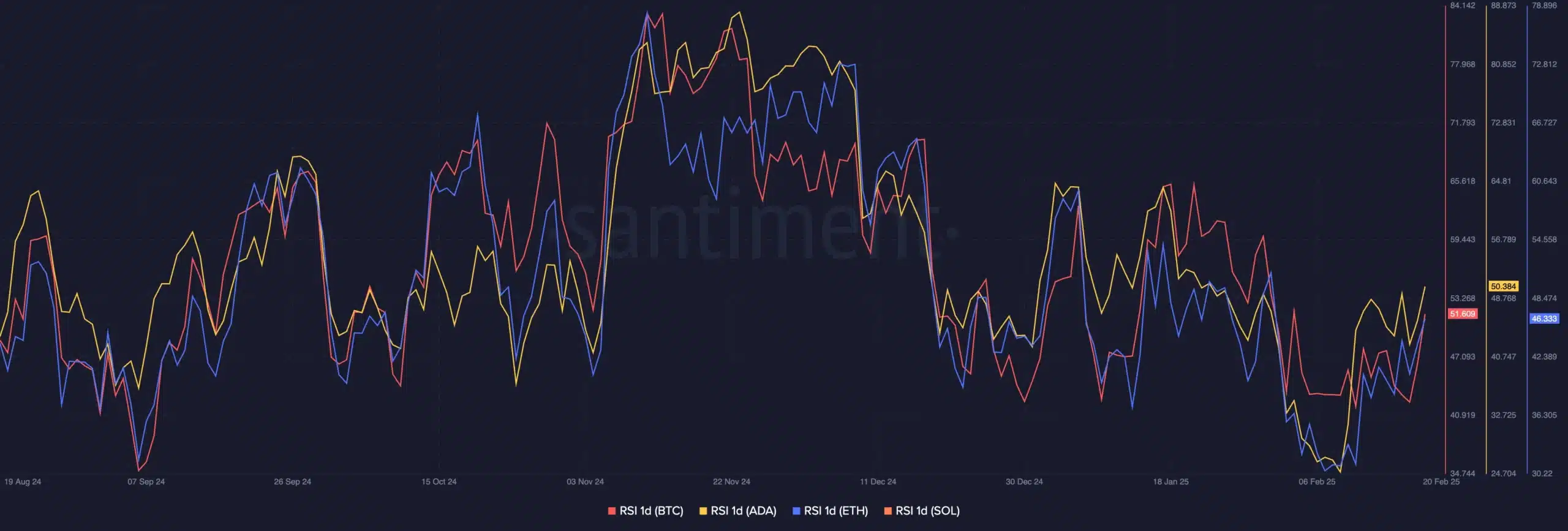-
Charles Hoskinson, co-founder of Cardano, elaborates on the potential of ADA to revolutionize Bitcoin’s DeFi landscape through innovative integration.
-
His insights suggest that a seamless interoperability approach could redefine how cryptocurrencies interact within decentralized finance, enhancing utility.
-
According to a recent statement from Hoskinson, “The Edinburgh Decentralization Index says that Cardano is the most decentralized cryptocurrency on the planet,” highlighting its foundational strengths.
Explore how Cardano (ADA) aims to enhance Bitcoin’s DeFi capabilities, leading to a potential shift in the cryptocurrency landscape.
Cardano’s secret sauce to Bitcoin’s success
In a recent conversation with Scott Melker, Hoskinson addressed how Cardano could enhance Bitcoin’s scalability and utility. He stated, “The Edinburgh Decentralization Index says that Cardano is the most decentralized cryptocurrency on the planet. OK, so, you know, the evidence is there. The papers are there. The indexes are there. The growth rates are there.”
He added, “And by the way, we’re in the reserve. The U.S. government seems to think there’s something valid with Cardano.” This confidence in ADA stems from its potential to facilitate collaborations with major institutions looking to enter the Bitcoin DeFi space.
Hoskinson believes that the growing involvement of large financial institutions in Bitcoin DeFi is inevitable, driven by their fiduciary responsibility to generate returns. He suggested that once Bitcoin ETFs begin offering DeFi-based returns, shareholder expectations will push for similar opportunities across the market.
Looking ahead, he envisions a three-year outlook for institutions to establish a substantial presence in Bitcoin and UTXO-based DeFi.
How will Cardano act as a catalyst for Bitcoin?
Cardano plans to integrate Hydra with the Bitcoin Lightning Network to establish a trustless recursive bridge between the two ecosystems. The Aiken programming language is set to be optimized for scripting, ensuring seamless interoperability across both networks.
Collaborating with Maestro, Cardano aims to simplify Bitcoin’s integration with UTXO blockchains for an enhanced user experience.
“It’s still early days but we are making methodical progress every step of the way. And what’s nice is Cardano has that ethos that’s interoperable and compatible with Bitcoin,” Hoskinson stated, bolstering expectations for the merger of these protocols.
What more?
Cardano’s co-founder further asserts that ADA will enable Bitcoin users to participate in DeFi transactions while using only BTC, eliminating the need for other tokens. He believes that this seamless merger could propel ADA’s DeFi ecosystem beyond that of Ethereum [ETH] and Solana [SOL] combined.
He also emphasized, “It’s a lot harder for Bitcoin to make that transit. So they kind of meet in the middle and use Cardano as a crossroads for those two things.” This perspective conveys how interoperability could pave the way for greater functionality and adoption.
ADA outperforms Bitcoin and leading altcoins
Meanwhile, Bitcoin was trading at $83,190.63 after a 1.47% increase in the past 24 hours, while ADA saw a notable uptick, rising 3.04% to $0.6734, at press time. Despite multiple assets exhibiting an RSI above the neutral level, ADA stood out with its RSI at 53, surpassing not only other altcoins but also BTC.

Source: Santiment
Additionally, Cardano stands out among top altcoins, recording a 96% gain from its pre-election levels. ADA’s resilience highlights its market strength, establishing it as a leading contender despite the inherent volatility in crypto prices.
Meanwhile, Bitcoin’s dominance surged to 62.40%, marking a four-year high and indicating a potential resurgence in altcoin interest akin to the trends witnessed in 2021.
Conclusion
In summary, the advancements in Cardano’s integration with Bitcoin’s DeFi ecosystem, as articulated by Charles Hoskinson, signify a crucial evolution in both platforms. As these developments unfold, the potential for ADA to take a leadership position in decentralized finance becomes increasingly tangible.
